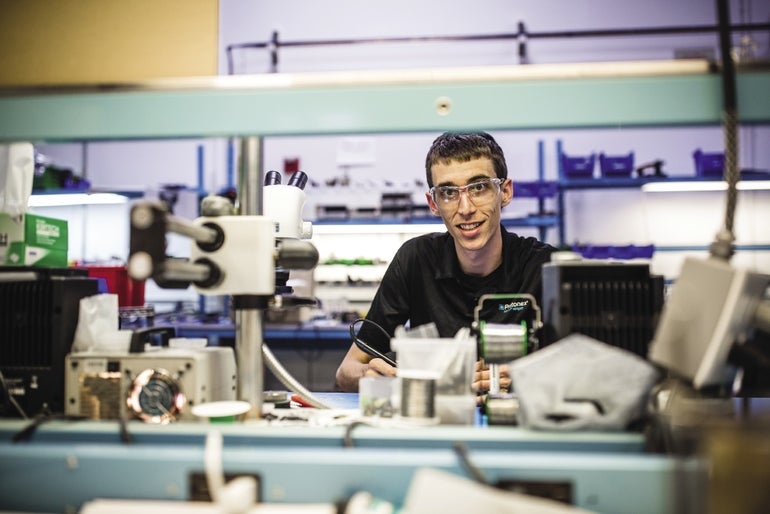When Worcester has attracted new residents in the years since 2010, it’s very often been in one segment of the population: the 20- and 30-somethings often sought after for the energy and spending they bring to a community.Of the roughly 4,600 people Worcester has added since 2010, more than eight out of 10 have been […]
Get Instant Access to This Article
Subscribe to Worcester Business Journal and get immediate access to all of our subscriber-only content and much more.
- Critical Central Massachusetts business news updated daily.
- Immediate access to all subscriber-only content on our website.
- Bi-weekly print or digital editions of our award-winning publication.
- Special bonus issues like the WBJ Book of Lists.
- Exclusive ticket prize draws for our in-person events.
Click here to purchase a paywall bypass link for this article.
When Worcester has attracted new residents in the years since 2010, it’s very often been in one segment of the population: the 20- and 30-somethings often sought after for the energy and spending they bring to a community.
Of the roughly 4,600 people Worcester has added since 2010, more than eight out of 10 have been between the ages of 25 and 34, according to new U.S. Census Bureau estimates released this fall.
The new data comes as Worcester city officials pitch the city as a more affordable place than Boston and a place where neighborhoods such as downtown can be places to live and go out to eat – and not just to work.
John Brown, a Clark University economics professor, sees Worcester’s growth in young adults as the result of both rising demand for jobs requiring degrees, which can attract more people for those jobs, and of the city being a more attractive place for younger people to live, particularly with relatively cheap housing and a growing number of entertainment and dining options.

Rejuvenating the city
Attracting a young workforce has been a priority of the city for years, as officials wanted to keep recent college graduates and support a growing workforce, said Paul Matthews, the executive director of the Worcester Regional Research Bureau.
Younger workers can have an effect on retail and restaurants, get involved in local causes, and show an ongoing rejuvenation in the city, Matthews said.
“It’s a thousand factors,” Matthews said, describing the appeal to cities.

Worcester’s not alone in attracting young adults in recent years, and in fact is adding such residents at slower rates than Massachusetts as a whole and Worcester County.
Worcester’s 25-to-34 population has risen by 14% since 2010, putting it at roughly the same pace as Springfield and Portland, Maine. Boston has seen that segment of its population rise by 36% in that time, while younger adults have been largely overlooking cities like Providence and Hartford.
The share of Worcester’s population in that age demographic – 17% – is also about average compared to peer New England cities.

Younger adults aren’t just moving to or staying in Central Massachusetts for Worcester. Worcester County has actually added adults in the 25-to-34 range at a faster rate of 17%. So has Massachusetts, rising 22% faster than Worcester’s pace.
Worcester’s population without that key younger demographic has been virtually flat if not for such residents moving in, growing by 0.4% since 2010 with that age demographic excluded. Among older age ranges, the population has declined, including a 9% drop among those ages 45 to 54.
While Worcester’s adding more young adults, it’s not as clear that it’s necessarily young professionals – those with a college degree, with more disposable income and more appealing to businesses – who are moving in. The city’s rate of residents with a bachelor’s degree or higher, at 30%, is essentially the same as in 2010, and trails significantly behind growth in such residents over that time in other Massachusetts Gateway Cities.
Five other takeaways from the Census' fall data release
1) Worcester’s population is aging, despite the growth in young adults and the drop in older working-age adults. The city’s 55+ population rose by 14% since 2010, the same rate as those 25 to 34. The city’s 19-and-under population, on the other hand, fell by 8%.
“The issue is whether younger people stay in the city once they have found a life partner and then start a family,” Brown said, referring to a challenge cities like Worcester have often faced when they are surrounded by communities with higher-rated school districts.
“Worcester does have some high-performing elementary schools, and I am supposing the challenge will be extending those successes to middle and high schools,” he said.
2) The city’s median age rose during that time from 34.0 to 34.9. That’s not unusual. Boston, Providence, Hartford and others aged during this time as well, as did Massachusetts as a whole. Manchester, N.H., is one exception among similar cities. Worcester County also has aged over that time, with the median age rising from 39.2 to 40, including a 25% increase in residents 55 or older.
3) Across all ages, Worcester hasn’t been keeping pace with surrounding communities for population growth, even at a time when cities are generally seen as more desirable places to live than a generation ago. The city has grown by two-thirds the rate of Worcester County since 2010, according to the Census.
4) Worcester’s poverty rate may be on the way down after rising in recent years. The latest data for 2018 shows a 17.9% poverty rate for the city. The most recent five-year average through 2017 was 21.8%.
5) Worcester and Worcester County’s populations continue to diversify. In 2018, those who don’t identify as white and not mixed-race accounted for 32% of the city’s population. While Boston, Hartford and New Haven, Conn., have larger non-white populations, Worcester’s population diversified at the highest rate: 37% since 2010. Across Worcester County, the non-white population has rose over that time by 34%.


